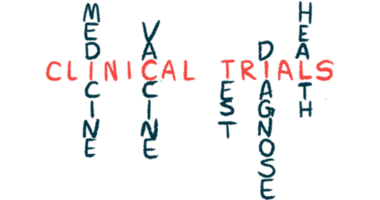
Newly Diagnosed: Taking the First Step on Your Journey
Becoming educated is a good place to start on your journey with hemophilia. Whether you are a patient or a caregiver, knowing as much as possible about the disease will help you be a more active participant in your or your loved one’s healthcare. Learn more below about hemophilia, its causes, its symptoms, and how it’s diagnosed.
Overview
Hemophilia is a blood disorder that’s usually genetically inherited from the parents. People born with hemophilia have little or no clotting factor — a protein needed for normal blood clotting. Hemophilia can also be acquired, meaning patients don’t inherit the disease from their parents but instead develop it during their lifetime. This can happen if their body forms antibodies that attack the clotting factors in the blood.
Types
The two main types of hemophilia are A and B, with a third, rarer form called hemophilia C. There are 13 types of clotting factor that work with platelets to help the blood clot. Each disease type is directly related to a specific factor; namely, hemophilia A is a factor VIII deficiency, hemophilia B is a factor IX deficiency, and hemophilia C is a factor XI deficiency.
Causes
Mutations in the gene that provides instructions for making factor VIII cause hemophilia A, while mutations in the gene that provides instructions for making factor IX cause hemophilia B. The genes encoding for factor VIII and factor IX are both situated on the X-chromosome. Mutations in these genes cause a deficit of blood-clotting factors, which are proteins in the blood that work together with platelets to stop or control bleeding.
Symptoms
Hemophilia can be mild, moderate or severe, depending on how much clotting factor is in our blood. The major signs of hemophilia are excessive bleeding and easy bruising. The extent of bleeding depends on how severe the disease is. Children with mild hemophilia may not show signs unless they experience excessive bleeding from a dental procedure, an accident, or surgery.
Diagnosis
If a patient has a bleeding problem, a physician first inquires about the medical history of the family. Hemophilia testing includes a physical exam, blood screening tests, and clotting factor tests. Blood screening tests are necessary to determine the delay in blood clot formation. Clotting factor tests, also called factor assays, are required to determine the levels of clotting factors. The results of these tests reveal the type and severity of hemophilia.
Living With Hemophilia
Living with hemophilia can be challenging, and there are certain preventive measures and and precautions that patients must take to help manage the disease. However, improvements in treatment now make it likely that a child born with the disease today will live a normal lifespan. Eating a nutritional diet and regularly exercising can help hemophilia patients stay healthy and active.






